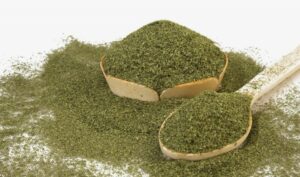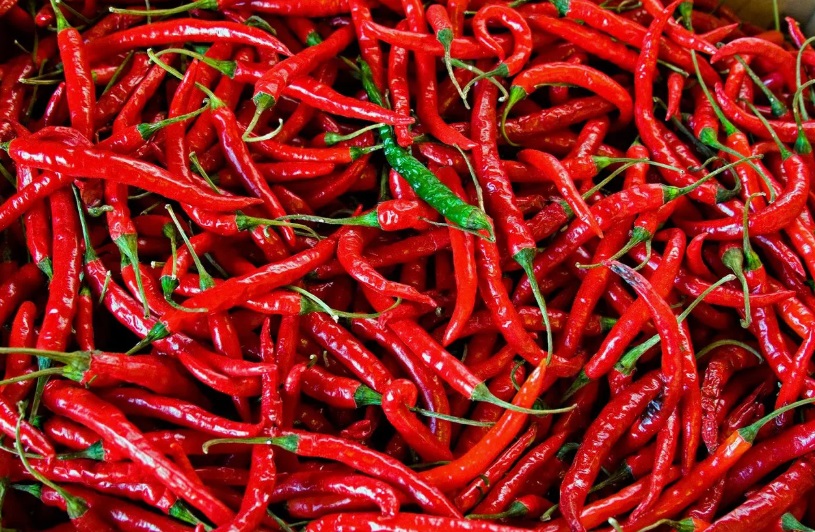The Wonderful World of Mint: Where It Grows, Its Benefits, and Uses
Mint is one of the most versatile and beloved plants, known for its refreshing aroma and multifaceted uses. From your kitchen to your medicine cabinet, mint has carved out a place for itself as an everyday essential. Let’s delve deeper into what mint is, where it grows, its uses, and the incredible health benefits it offers.
The Wonderful World of Mint:
What is Mint and Where Does it Grow?
Mint is a fast-growing herb belonging to the Mentha genus. It is characterized by its fragrant leaves, cooling effect, and ability to adapt to various environments. There are many varieties of mint, including spearmint, peppermint, and chocolate mint, each with its own unique flavor and scent profile. The Wonderful World of Mint:
Mint thrives in a range of climates but prefers moist, well-drained soil and partial sunlight. It is native to Europe, Asia, and North America and has since spread globally due to its popularity. Mint is a hardy plant and grows abundantly in gardens, pots, or even wild spaces. Gardeners love it for its rapid growth, but caution is advised—if left unchecked, it can overrun other plants in your garden due to its invasive growth habits.
What Are the Benefits of Mint?
Mint offers a plethora of benefits that range from culinary and cosmetic uses to medicinal properties. Here is a quick look at what this modest herb can bring to the table:
Culinary Benefits: Mint enhances food and beverages with its refreshing taste. A touch of mint in dishes or drinks adds a cooling sensation that is perfect for hot summer days.
Medicinal Powerhouse: Mint has been used in traditional medicine for centuries to treat digestive disorders, relieve headaches, and reduce congestion.
Aromatherapy: The invigorating scent of mint is a popular choice for reducing stress, promoting relaxation, and improving mental clarity.
Skin and Hair Care: Many skincare products contain mint for its soothing and anti-inflammatory properties.
Where and How Can We Use Mint?
Mint’s versatility makes it a powerhouse herb that can be incorporated into daily life in numerous ways:
In the Kitchen:
Add fresh mint leaves to salads, sauces, and marinades for a burst of flavor.
Brew mint leaves into herbal teas to soothe your throat and relax your mind.
Use mint as a garnish for soups, desserts, and cocktails like mojitos.
Blend it into smoothies or chutneys for a refreshing edge.
Home Remedies:
Make a DIY steam inhalation bowl with mint leaves to help relieve nasal congestion.
Rub crushed mint leaves on your skin to reduce itchiness and irritation caused by insect bites.
Prepare mint-infused water for a natural detox and hydration boost.
Cosmetic Applications:
Use mint essential oil in homemade lip balms and facial scrubs to rejuvenate your skin.
Combine mint leaves with hair oils to promote scalp health and reduce dandruff.
Add mint to foot soaks to alleviate soreness and refresh tired feet.
Around the House:
Use mint leaves as a natural air freshener to deodorize your home.
Grow mint indoors as a natural pest repellent—it can keep ants, mosquitoes, and spiders away.
What Are the Health Benefits of Mint?
Mint offers an impressive arsenal of health benefits, making it a key ingredient in both natural and conventional remedies. Here’s how it supports overall health:
Aids Digestion:
Mint is renowned for its ability to soothe the stomach, reduce bloating, and alleviate indigestion. It relaxes the muscles of the gastrointestinal tract, aiding in smoother digestion.
Relieves Respiratory Issues:
Menthol, an active compound found in mint, is highly effective in relieving congestion, coughs, and colds. Its antibacterial properties also help fight infections.
Boosts Mental Clarity:
The refreshing aroma of mint stimulates focus, enhances memory, and reduces fatigue. Whether inhaled or ingested, it acts as a natural mood enhancer.
Supports Oral Health:
Mint leaves contain antibacterial and anti-inflammatory properties that combat bad breath, plaque, and gum infections. This is why it is a common ingredient in toothpaste and mouthwash.
Eases Headaches:
Applying mint essential oil to your temples can help alleviate tension headaches and migraines due to its cooling and soothing effect.
Helps with Weight Management:
Mint supports the production of digestive enzymes, which aids in the breakdown of fat. Drinking mint-infused water regularly can contribute to a balanced metabolism.
Rich in Antioxidants:
Like many herbs, mint is packed with antioxidants, which help fight free radical damage, slow aging, and reduce the risk of chronic diseases.
Mint, with its refreshing aroma and distinctive flavor, is a beloved herb enjoyed across cultures. Beyond its ornamental appeal, mint boasts remarkable versatility in culinary applications and offers several health benefits, particularly in alleviating cold and flu symptoms.
Culinary Applications:
Mint’s vibrant flavor profile makes it an ideal ingredient for both sweet and savory dishes.
* Savory Dishes:
* Fresh mint leaves add a bright, herbaceous note to salads, couscous, and quinoa.
* Mint chutney, a staple in Indian cuisine, complements grilled meats, fish, and vegetable dishes.
* Mint is often used in Mediterranean dishes like tabbouleh and lamb tagine, lending its refreshing character.
* Creamy mint sauces elevate roast lamb or potatoes, creating a harmonious balance of flavors.
* Sweet Dishes:
* Mint ice cream and sorbet are classic summertime treats, offering a cool and invigorating experience.
* Chocolate desserts often incorporate mint, providing a contrasting flavor that enhances the chocolate’s richness.
* Mojito cocktails blend rum, sugar, lime juice, soda water, and fresh mint leaves for a refreshing beverage.

Health Benefits and Cold & Flu Relief:
Mint contains menthol, a natural decongestant that helps clear nasal passages and soothe sore throats.
* Decongestant Properties: Menthol’s cooling effect provides temporary relief from congestion caused by colds and allergies. Inhaling steam infused with mint leaves can help loosen mucus and ease breathing difficulties.
* Antibacterial and Antiviral Activity: Mint possesses antibacterial and antiviral properties, which may help fight off infections.
* Soothing Properties: Mint tea is a traditional remedy for soothing sore throats and calming coughs. Its anti-inflammatory properties may help reduce inflammation in the respiratory tract.
Mint: A Versatile Herb with Numerous Health Benefits
Mint is a popular herb that is widely used in various dishes across the world. Its refreshing and cooling properties make it a favorite ingredient in both cooking and baking. Moreover, mint is also known for its numerous health benefits, especially for treating cold and flu. In this article, we will discuss some practical dishes with mint, its preferred uses, and the health benefits, especially related to cold and flu.
Practical Dishes with Mint
Mint can be used in a variety of dishes, both sweet and savory. Here are some practical dishes where mint can be used:
Salads: Mint can be added to any salad to give it a fresh and tangy flavor. It goes especially well with cucumber, tomato, and feta cheese salads.
Sauces: Mint can be used to make sauces like mint chutney, which can be served with samosas, kebabs, and other Indian dishes.
Drinks: Mint is a popular ingredient in drinks like mojitos, iced tea, and lemonade. It can also be added to smoothies and juices for an added flavor and health benefits.
Desserts: Mint can be used in various desserts like ice cream, cakes, and cookies. It can also be added to fruit salads, giving it a refreshing twist.
Preferred Uses of Mint
Mint is a versatile herb that can be used in various dishes, but it is especially preferred in certain dishes like:
Middle Eastern and Indian dishes: Mint is widely used in Middle Eastern and Indian dishes like kebabs, biryanis, and salads.
Beverages: Mint is a popular ingredient in beverages like mojitos, iced tea, and lemonade.
Desserts: Mint is used in various desserts like ice cream, cakes, and cookies, especially during the summer months.
Health Benefits of Mint, Especially Related to Cold and Flu
Mint has numerous health benefits, and it is especially known for its ability to treat cold and flu. Here are some of the health benefits of mint related to cold and flu:
Relieves congestion: Mint has menthol, which helps in relieving congestion and eases breathing.
Soothes sore throat: Mint has anti-inflammatory properties, which help in soothing a sore throat and reducing pain.
Boosts immunity: Mint has antioxidants and vitamins like Vitamin A and C, which help in boosting the immune system and preventing cold and flu.
Provides relief from cough: Mint has expectorant properties, which help in providing relief from cough and reducing phlegm.
Freshens breath: Mint has antibacterial properties, which help in freshening breath and preventing bad breath.
Conclusion
Mint is a versatile herb that can be used in various dishes, both sweet and savory. It has numerous health benefits, especially related to cold and flu. Mint can be used in salads, sauces, drinks, and desserts, and it is especially preferred in Middle Eastern and Indian dishes, beverages, and desserts. Mint can help in relieving congestion, soothing sore throat, boosting immunity, providing relief from cough, and freshening breath. So, add some mint to your dishes and reap the numerous health benefits it has to offer.
Mint’s culinary versatility and health benefits make it a valuable addition to any kitchen. Whether adding a fresh touch to savory dishes, enhancing sweet treats, or providing relief from cold and flu symptoms, mint continues to be a cherished herb worldwide.
Mint is much more than a garnish or flavoring ingredient—it is a powerful herb with a host of culinary, medicinal, and health benefits. Whether you grow it in your garden, use it in your cooking, or take advantage of its natural healing properties, mint is an essential addition to your daily life. Its refreshing taste, therapeutic properties, and versatility make it a little green wonder that enhances health and well-being naturally. So the next time you encounter a fresh sprig of mint, be sure to savor not only its fragrance but also its multitude of benefits!
You can read below writings
The Humble Onion: A Culinary Staple with Remarkable Benefits
What is White Cabbage and Where Does it Grow
What is Coffee and Where Does It Grow
Lemon: The Tangy Wonder – Benefits, Uses, and More






